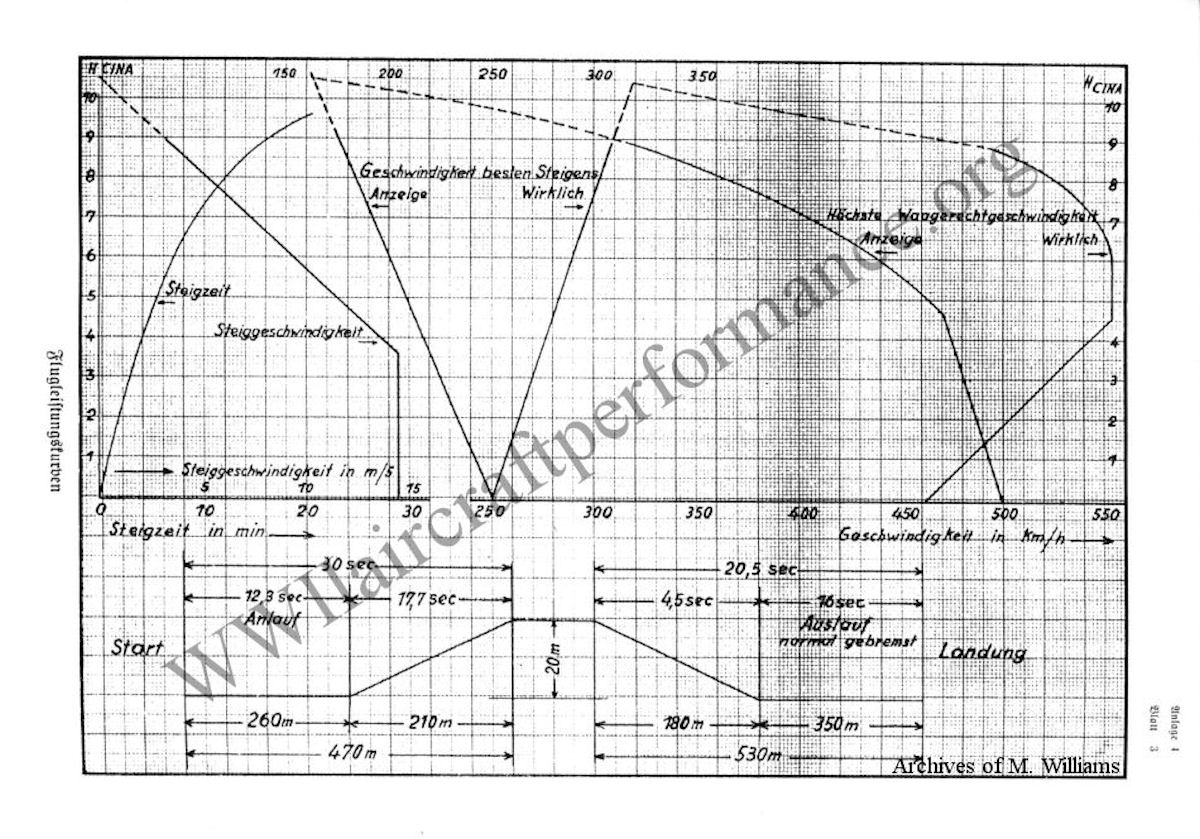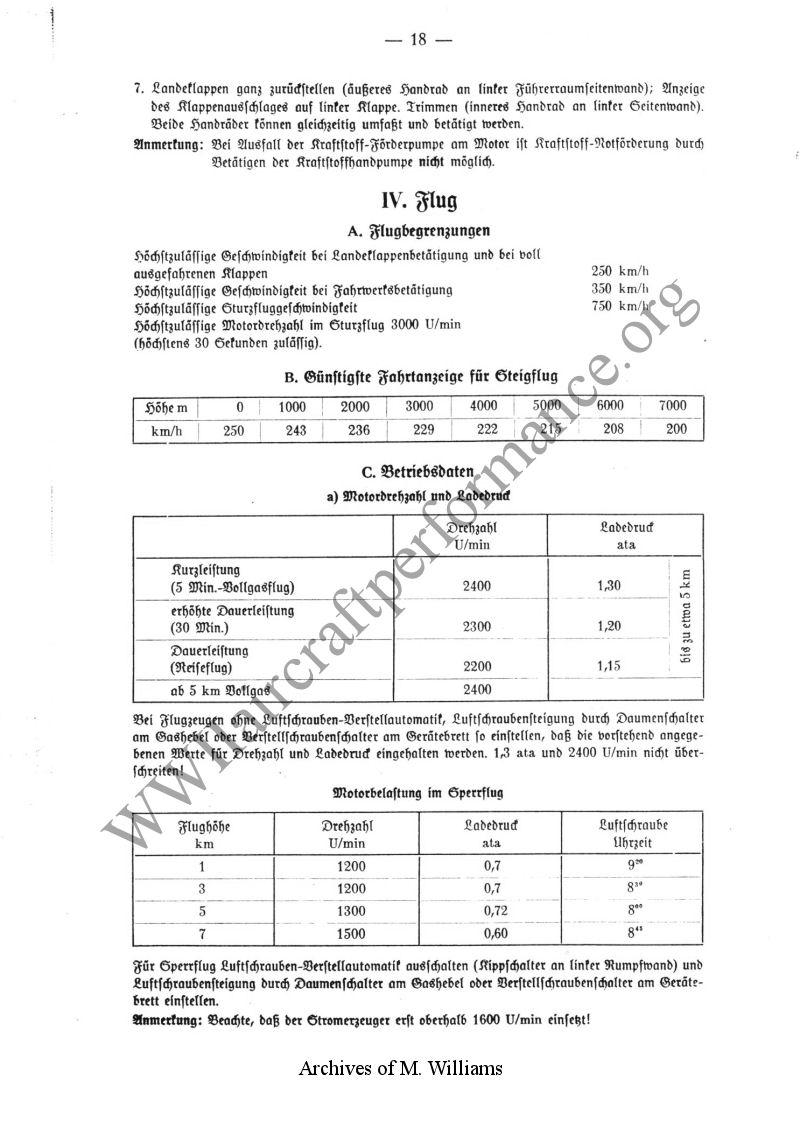
 |
|
|||||||
| IL-2 Sturmovik: Cliffs of Dover Latest instalment in the acclaimed IL-2 Sturmovik series from award-winning developer Maddox Games. |
 |
|
|
Thread Tools | Display Modes |
|
|
|
#1
|
|||
|
|||
|
from "Radinger, Schick, Otto: Messerschmitt Bf109" Aviatik Verlag
V-15 BF-109, W.Nr. 1773; D-IPHR Engine DB-601A, W.Nr. 140 with one-stage compressor [4km full pressure] (einstufiger Lader, 4km Volldruckhöhe), 1100 PS VDM-Verstellschraube with 3,10m diameter 400l fuel tank armory: 2MG 17 in fuselage, 2MG 17 in wing Half hour flight on 4. Feb. 1938 in Augsburg and tested at the same day in Rechlin. In April back in Augsburg and used as prototype for Bf-109 T-series wing tests. interesting is that that both prototypes suffered power loss in full pressure height. V15: 146PS in 3900m height tested on 6. 7. and 9 May 1938 V15a: 200PS 26. April 1938 How this problem was solved is unknown to the authors since there is no report. EDIT: By the way L.Dv.556/3 says for E-1, E-3 height / Max. Speed 0 km / 460 km/h 1 km / 480 km/h 2 km / 500 km/h 3 km/ 520 km/h 4 km / 540 km/h 5 km / 555 km/h 6 km / 555 km/h 7 km / 550 km/h Max. allowed horizontal speed at SL 485 km/h Engine: DB-601A (full pressure height 4 km) at SL: 1min. power 1175 PS at 2500 rev/min 5min. power 1015 PS at 2400 rev/min 30min power 950 PS at 2300 rev/min continuous power 860 PS at 2200 rev/min power in height: 5min. power in 3,7km 1100 PS at 2400 rpm continuous power in 4,1km 1050 PS at 2400 rpm continuous power in 4,5km 1000 PS at 2400 rpm economic continuous power at 3,85km 975 at 2250 rpm VDM-Verstellschraube 3,10m diameter Last edited by Kodoss; 10-12-2012 at 10:41 AM. |
|
#2
|
|||
|
|||
|
Quote:
Thanks for the information, your books quotes for horizontal speed of E1 and E3 types agree with this test approx. time period of E-1/E-3 production, as per this table:  I am not convinced there were two aircraft, each would typically be numbered differently if the system used in the numbering of all the other prototypes was followed. It seems more likely, the designation 'a' might mean the same plane with a different engine installation or some other equipment. The fact V15 was being used as a test bed for a potential 109T model in April at the same time as Kurfurst's test, is a likely indicator of why its performance envelope in that test was completely different than a standard E model and why speeds were so high at sea level. Carrier borne fighter aircraft require more performance at lower altitudes, the final 109T was built with the DB601N engine using higher octane fuel, not with the DB601A using the standard 87 octane variety. With the note that the engine was allowed to rev to 2500 rpm, not standard in the DB601 in this time period, see table below, it may be there was an attempt to gain power at takeoff and at lower altitudes. Whether or not V15 was being tested with higher octane fuel is a question which needs to be answered.  In any case, the fact seems to be that V15's test was not representative of a standard E-1. Last edited by *Buzzsaw*; 10-12-2012 at 06:10 PM. |
|
#3
|
||||
|
||||
|
Yea i also think that 109 E protoype test are not adequate for serial production of 109 E.
Looking at German charts with serial 109 E speed test i think that sea level speed at 1.3-1.35 Ata ( 5 minutes emergency power) should be between: 467-485 kph depend of condition of plane, engine type and type of windscreen and equimpent. |
|
#4
|
|||
|
|||
|
How is it possible that IAS and TAS are different at 0m altitude? Position error? Why is IAS equal to TAS at 0m altitude for best climb speed?
|
|
#5
|
|||
|
|||
|
Quote:
It is also with old speed-indicators. Their are mostly adjusted to 50 km/h by motorcycles (with top speed below 150 km/h), the rest is tolerated inaccuracy. |
 |
|
|